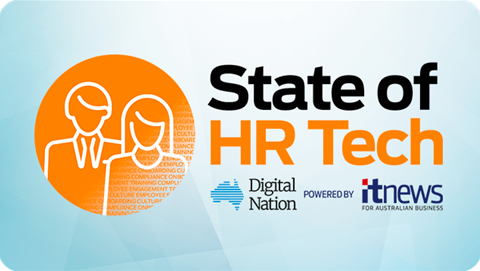Image: Matthew Bertram, Micro Focus

The word ‘resiliency’ is now de rigueur in business leadership circles. But what are its implications when it comes to technology strategy?
To explore this, we spoke to Matthew Bertram, Melbourne-based business consultant at global enterprise software company Micro Focus. He sees a combination of ‘extreme automation’, AI and cultural change helping organisations move from survival mode to growth.
We asked him below about this and other key issues for business leaders and managers.
In the past you’ve identified three distinct phases many organisations have been through since 2020: survive, adapt and thrive. Can you step through these and help us understand the lessons learned in each phase?
When the pandemic hit, and countries started to go into lockdown, there was very much a survival mode for a lot of us. And the initial thing was how do we keep business operating when everyone's working from home? For some of the customers all of a sudden they needed much more VPN access to their networks. And that had implications for performance, for connectivity. Then building on that, you had to start to think about security because the attack surface had grown.
We had to then adapt the way that we were working, and that created new complexities and challenges for IT. And I think the adapting was how do we change the way that we're operating? And a good example of that was actually Micro Focus. Internally, we accelerated the adoption of new collaboration tools and software.
We also saw examples of organisations that had to make new services available to their employees, and to their end users and their customers. And so that adapting became, what are the new services that we need to offer and how do we deliver that quickly? A good example is all the contact tracing and checking apps that have been developed, which even here in Australia, each state has their own app. But each of those apps had to get built, developed, tested; they had to think about security, they had to deploy it, and they had to manage it. And it had to happen really quickly.
I think now, as we get further through, we're no longer worrying about survival when a lockdown occurs. The question for business is how do we grow now that things have changed? How do we become more efficient with our employees? And so there's questions there about how do we use technology, how do we use data, how do we use automation to help our business grow further, whether that's by reducing costs or being able to deliver even more services digitally and faster, so that we don't get left behind in the new way of working.
Organisations haven't simply digitised existing ways of working. In many instances, they've invested in new ways of working and creating new services. That puts a lot of pressure on DevOps teams. What new capabilities are required to operate in this new and often rapidly changing environment?
I think the key word here from a DevOps perspective is continuous, and the sub word is automation. So it’s continuous everything – rapid delivery, rapid time to value, reducing cycle times to get those new services, which are often delivered by applications, out to market quickly. And DevOps teams have been working on this for years. We've been adopting agile and new methodologies, building in continuous integration, continuous delivery, and continuous deployment. That has just become absolutely more critical.
So we need to automate everything, do continuous testing, build-in security analysis and assessment earlier in the process. On the operations side of things, we need to automate that to make it smooth and seamless and quick, so you’ve got that turnaround time really crisp and short, so that we can deliver that service to market and then adjust it and change it because we need to get things out there, learn from that and do it again. So automation is key. Doing things rapidly and repeatedly – that continuous idea of DevOps – is really critical.
Can you describe what you mean by extreme automation and walk us through the capabilities that organisations require to achieve this?
Extreme automation, to me, is two things – it is about automating everything, or as much as we can, and it's about the importance of bringing AI into that process to help with the decision making and driving that automation. So, if I think about automation, one of the challenges we have is we're still reliant a lot on people in the process. Whether that’s a DevOps development process, whether it's in operations, and you've got operators responding to events or security in your SOC, there are people involved. There will always be people involved, but the more that we can take them out of the process in terms of speeding things up with AI, with that decision making, will really help us be resilient. Because if people are sick, for example, and they've got the knowledge in their head, or they've got their own scripts that they're running, we may not be able to rely on that.
We need AI to help us cut through the noise. So, looking at the data, identifying patterns, at high speed so that we can then respond and focus on the things that are important.
How does this translate to a typical IT use case?
A really good example of extreme automation and AI helping is actually in the testing space. We provide functional testing solutions, performance testing solutions, and one of the challenges our customers have always had with testing is that the user interface of the application keeps changing. And how it looks on my iPhone is different to how it works and looks on my Android. And so maintenance of test scripts becomes a problem, because it keeps changing we have to modify that. So the goal of having AI-driven testing is that we can write test scripts in our natural language. I can write one script that will work regardless of the browser or the application or the device that we're testing against. Because the AI can work out that “login” on one device screen is the same as “sign in” on a different screen – it means the same thing. We’re then reducing the cost of maintenance, we're doing things faster, and our process, our automation, is not breaking.
Technology can only achieve so much. How important is it for leaders to address the issue of culture change, and to foster a decision making culture that allows teams to generate the best business benefit from the investments in technology, skills and capabilities?
Cultural change is really important. And this is a topic that comes up again and again. I work for a technology company who provide tools and solutions that help drive automation, do things faster, more resiliently, but a tool is not enough. You need to get teams to adapt and to change and to embrace technology and new ways of operating as well. And often the biggest challenge is cultural change. So things like having management sponsorship is really important – taking the lead and driving the change. Governance, follow up reviews – there's a whole lot of steps around change management that lots of organisations are very familiar with.
If you want to empower decision making and give your teams more flexibility, execs need the right insight. And so this ties back to getting the analysis and the data, cutting through the noise. For example, in the era of project management, in the past you create a project, it would get delivered, it would finish, and you'd hope that it delivered the benefits. What we're seeing increasingly is organisations moving to more of a product mindset, where the focus is on what are the key business indicators, the KPIs that these projects or this team is going to deliver against. And let's make sure we keep measuring and monitoring that over time.




_(22).jpg&h=140&w=231&c=1&s=0)
.png&h=140&w=231&c=1&s=0)





 iTnews Executive Retreat - Security Leaders Edition
iTnews Executive Retreat - Security Leaders Edition












_(1).jpg&h=140&w=231&c=1&s=0)



